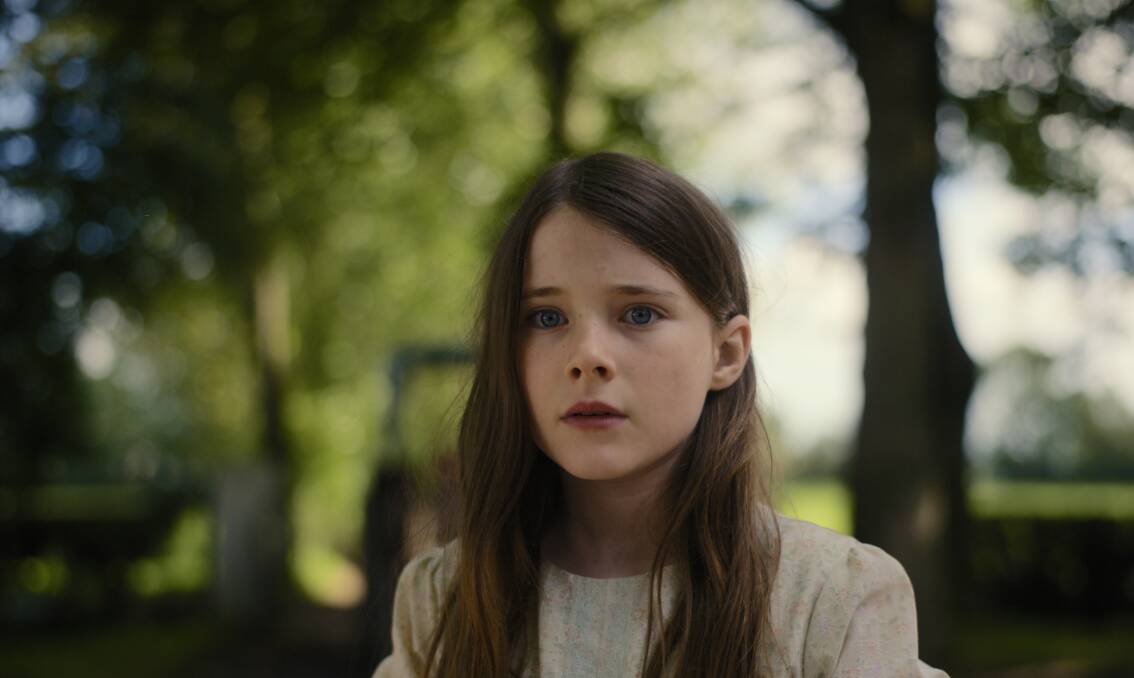The Quiet Girl. M, 95 minutes. 5 stars
Subscribe now for unlimited access.
$0/
(min cost $0)
or signup to continue reading
I was the youngest person by a long way - probably decades - in the first Dendy cinema screening of The Quiet Girl. It's a reminder that there is a potential older audience out there and if you show films that appeal to them, they will come. And the films don't need to star Judi Dench and/or Maggie Smith.
The Quiet Girl - in heavily accented English and subtitled Gaelic Irish - is the first film for both writer-director Colm Bairéad (adapting a story by Claire Keegan) and young Catherine Clinch in the title role. Both debuts are very impressive indeed.
The story is set in rural Ireland in the early 1980s. Cit (Clinch) is nine years old and living in a large and dysfunctional family. Her irresponsible father Athair (Michael Patric) drinks and gambles. Cit is neglected at home and struggling at school and keeps to herself as much as possible.
Her mother Mathair (Kate Nic Chonaonaigh) is about to give birth to child number five.
It's an intimate, delicate, beautifully made and observed piece, saying a lot with silence and subtle hints.
To ease the burden in the time of change - and to have one less mouth to feed - Cit is taken to stay for a while with distant relatives Eibhlin and Sean Cinnsealach (Carrie Crowley and Andrew Bennett) who are also farmers (and more successful ones).
Her father is perfunctory, dropping her off with an offhandedly cruel comment and not even remembering to unload her case.
Eibhlin warms to the quiet girl quickly, treating her kindly and compassionately, but Sean is more gruff. Although Eibhlin tells Cit that there are no secrets in their house, it soon becomes clear there is one.
It's not a big twist a la The Sixth Sense and the audience will figure it out long before a busybody neighbour reveals it to Cit. Maybe "secret" is the wrong word: some things are just too painful to talk about.
This isn't a film for people who want action and explosions and big emotions. It's an intimate, delicate, beautifully made and observed piece, saying a lot with silence and subtle hints. The intimacy is highlighted by the use of the 4:3 aspect ratio, almost square, recalling movies made in the pre-widescreen era.
After the shift in location, the nostalgic feeling is enhanced by the beautiful scenery, exquisitely captured by cinematographer Kate McCullough. But there's no sentimental ickiness here - not in the script, not in the performances, not in the score by Stephen Rennicks. The filmmakers respect the audience enough to let the emotions emerge naturally. Only a couple of brief slow-motion scenes seem out of place, conflicting with the more realistic nature of the rest of the film.

Clinch underplays her part beautifully, conveying the pain and unhappiness that have led Cit to withdraw from people and her gradual blossoming under the care and attention she receives. Eibhlin is motherly, tactfully attributing Cit's wet sheets to another cause and carefully brushing her long hair.
Sean thaws gradually, a process revealed through little gestures and then bigger ones, and it seems as though Cit might, finally, have found a loving home.
But can it last?
The story is seen through Cit's eyes, so a lot of what transpires is overheard or implied rather than explicit. The viewer must infer the nature of the relationship between Athair and a young woman he picks up from the side of the road, for example, and it makes sense that the audience will figure out Eibhlin and Sean's secret before Cit does.
We aren't privy to everything that's been happening in Cit's life but the glimpses we get reveal enough to explain Cit's careful, quiet manner.
The Quiet Girl is a little gem of a film and deserves to be seen.


